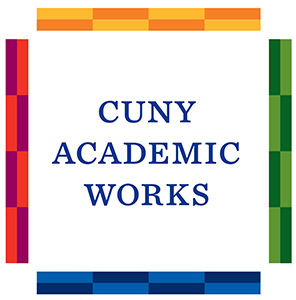
Welcome to the April 2022 edition of QC Research Highlights! As the weather warms (I hope) and the flowers on campus begin to bloom, it’s time to bring you another collection of faculty research available in CUNY Academic Works.
I’m including some articles from the sciences in this post, but I also wanted to include some works from other fields with a relationship to the scientific. All the works featured in this post deal with either physical or mental processes, or both.
(I’ll also note that all these works are a few years old; if you’re intrigued, you should also check out the authors’ more recent work!)
All the works featured in this series are available to read and download for free from CUNY Academic Works.
Humanities
Jason Tougaw (English) works in Consciousness Studies, and is specifically interested in the sense of the self and the relationship between the mind and the brain. His chapter, “The Self Is a Moving Target: The Neuroscience of Siri Hustvedt’s Artists,” analyzes the use of ekphrasis (the verbal description of works of visual art) in the works of Siri Hustvedt, a novelist who has also published academic research articles about neuroscience and memoirs about her own seizure disorder. Many of Hustvedt’s characters are artists who use visual media to portray the people around them. Tougaw argues that Hustvedt’s work explores the ethical implications of art’s power to “fix” a person’s identity at a specific moment in time, thus rendering them an artistic object. Ultimately, Tougaw sees Hustvedt’s work as arguing for a sense of identity rooted in subjectivity, change, and relationships.
Math and Natural Sciences
Cathy Savage-Dunn (Biology), along with at-the-time QC graduate students James F. Clark, Michael Meade, and Gehan Ramepura and co-author David H. Hall (Albert Einstein College of Medicine) published the article “Caenorhabditis elegans DBL-1/BMP Regulates Lipid Accumulation via Interaction with Insulin Signaling”. Savage-Dunn’s lab studies cell-to-cell signaling in nematodes (roundworms) – specifically, C. elegans. This article is about how cells regulate inputs to achieve metabolic homeostasis; specifically, it examines the role of a specific group of proteins (BMPs) in regulating lipids. BMP signaling was found to regulate lipid metabolism by signaling to the insulin pathway. Understanding this network is important to gaining a better understanding of metabolic disorders such as type II diabetes.
Usha Barahmand (Psychology) and co-authors (Ehsan Tavakolian and Ali Khazaee from the University of Mohaghegh and K. Mohammadi of Shahrekord University) studied the cognitive effects of methadone treatment for opioid addition in their article “Hot and Cold Executive Functions in Pure Opioid Users Undergoing Methadone Maintenance Treatment: Effects of Methadone Dose, Treatment Duration, and Time Between Last Methadone Administration and Testing.” Methadone treatment can benefit opioid users but is also associated with executive function impairment. The researchers used various tests to better understand participants’ cognitive responses, including decision-making, emotion perception, cognitive flexibility, working memory, and response inhibition. (I would recommend looking at the article for further descriptions of each of these very interesting tests.) The participants who had taken higher doses of methadone had more difficulty with the tasks involving cognitive flexibility and emotion perception, especially anger, but the authors also point out that not all studies agree on these points. This article also finds a relationship between the duration of methadone treatment and the decline in cognitive flexibility and several other areas, but the other effects seemed to decrease over time.
Education
Finally, I’d like to feature an article that directly addresses cross-disciplinary thinking. Bradley W. Bergey (Secondary Education and Youth Services), along with co-authors Joanna K. Garner (Old Dominion University), Avi Kaplan (Temple University), and Stephanie Hathcock (Oklahoma State University) write about concept mapping in professional development in their article, “Concept Mapping as a Mechanism for Assessing Science Teachers’ Cross-Disciplinary Field-Based Learning.” Secondary teachers with deeper subject knowledge and an understanding of the connections between disciplines are able to adopt better pedagogical strategies. The researchers used concept maps in a summer institute for science teachers’ professional development. Over the course of the institute, teachers were able to create concept maps reflecting a more sophisticated understanding of the subject matter and the links among different concepts. This article suggests one possible model of enriching teacher professional development to promote constructivist pedagogy.
Thanks for reading, and thanks to all the authors who have included their works in CUNY Academic Works.
This is one of a series of blog posts featuring faculty publications in CUNY Academic Works. Academic Works is a service of the CUNY Libraries dedicated to collecting and providing access to the research, scholarship, and creative and pedagogical work of the City University of New York. In service to CUNY’s mission as a public university, content in Academic Works is freely available to all.
If you would like to share your research in Academic Works, please see this guide to Academic Works, or contact Nancy.Foasberg@qc.cuny.edu.
